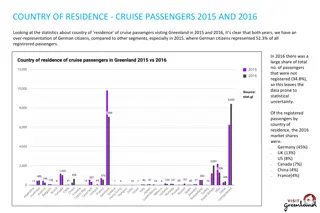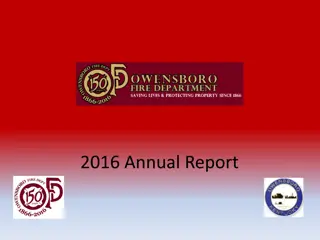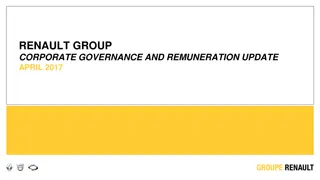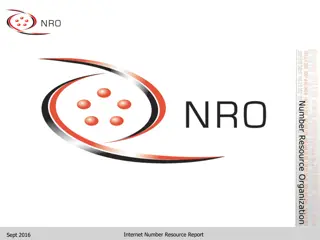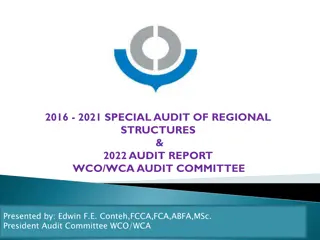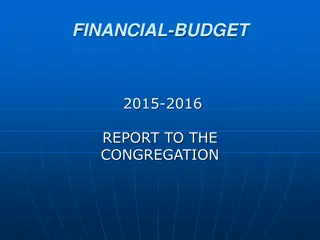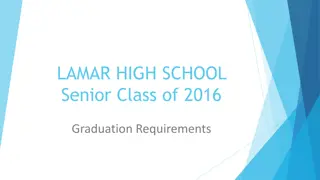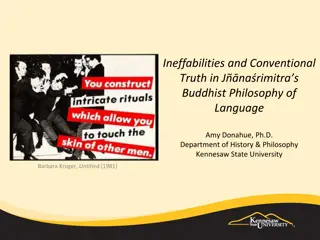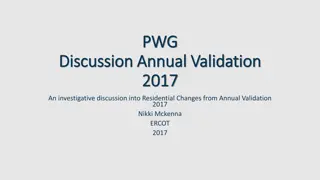
Beyond 6.5 TeV Magnet Circuit Performance
Explore the magnet circuit performance at 6.5 TeV and beyond in this informative content presented by Arjan Verweij. Delve into the operational viewpoints, training behaviors, and feasibility of operations at 7 TeV. Discover insights on quenches, training quenches, and issues related to magnet reception and operation. Gain valuable knowledge on the historical repairs, current statuses, and global views of training quenches in the magnet circuits.
Uploaded on | 2 Views
Download Presentation

Please find below an Image/Link to download the presentation.
The content on the website is provided AS IS for your information and personal use only. It may not be sold, licensed, or shared on other websites without obtaining consent from the author. If you encounter any issues during the download, it is possible that the publisher has removed the file from their server.
You are allowed to download the files provided on this website for personal or commercial use, subject to the condition that they are used lawfully. All files are the property of their respective owners.
The content on the website is provided AS IS for your information and personal use only. It may not be sold, licensed, or shared on other websites without obtaining consent from the author.
E N D
Presentation Transcript
Magnet Circuit performance at 6.5 TeV and beyond Arjan Verweij, TE-MPE-PE on behalf of the MP3 (cern.ch/MP3) acknowledgments to everybody involved in magnet reception tests, powering tests, and operation and analysis of the magnet circuits Mera peak, 6.5 km high Kun, 7 km high 2 Arjan Verweij, LHC Performance Workshop, 25-28 Jan 2016
Outline 1. Overview of the magnet circuits from an operational point of view, with focus on quenches, excluding issues presented by Felix (shorts, ELQA, ...), Reiner (QPS), and Bernhard (beam-induced quenches w.r.t. BLM thresholds). 2. Feasibility of operation at 7 TeV, based on training behaviour of previous HWC campaigns. I will not discuss the origin/understanding of quenches, de-training, memory, etc; see website of QBT (Quench Behaviour Team). Useful links: cern.ch/MP3/SummaryIssues cern.ch/MP3/QuenchDatabase List of all issues Database of all training quenches 3 Arjan Verweij, LHC Performance Workshop, 25-28 Jan 2016
Date 2007/8 Sept 2008 Repair Description Initial HWC. Target: 7 TeV (12 kA) Accident in S34 nQPS installed. Warm-up of S12, S34, S45, S56, S67 to 300 K. Warm-up of S23, S78 and S81 to 80 K. RB reduced to 51 s, RQ reduced to 9 s. HWC to 3.5 TeV (6 kA) HWC after Xmas to 3.5 TeV HWC after Xmas to 4 TeV (6.85 kA) Powering tests to 7 TeV (except mains) LS1. Warm-up of all sectors to 300 K. RB back to 102 s, RQ back to 30 s HWC to 6.5 TeV (11.1 kA) HWC after Xmas to 6.5 TeV 2009 Begin 2011 Begin 2012 Feb 2013 2013-2014 R u n 1 9/2014-3/2015 Mar 2016 R u n 2 4 Arjan Verweij, LHC Performance Workshop, 25-28 Jan 2016
Global view of training quenches Nr. of magnets 752 1476 40 6518 56 18 220 32 794 1232 (twin aperture) 2008 2 37 0 140 26 13 49 0 2 30 2009 3 38 1 0 4 0 0 0 0 0 Feb 2013 0 4 0 77 14 10 68 4 0 0 2014/5 23 23 4 154 37 4 31 2 2 175 60 A 80-120 A 120 A triplet 600 A 600 A triplet IPD IPQ IT mains RQ RB (S56 to 11.2 kA) (all sectors to 11.1 kA) Important: some commissioning currents and test sequences have been changed during the years, so the number of quenches cannot always be directly compared among HWC campaigns. 5 Arjan Verweij, LHC Performance Workshop, 25-28 Jan 2016
60 A circuits Nr. of magnets 752 2008 2 2009 3 Feb 2013 0 2014/5 23 60 A 5 quenches in 5 different magnets Possibly not all quenches registered 23 quenches in 21 different magnets 2 quenches on flat-top (60 A) Other issues: 2 circuits condemned Small number of quenches considering large number of magnets, and all quenches well above the operational currents. 6 Arjan Verweij, LHC Performance Workshop, 25-28 Jan 2016
80-120 A circuits Nr. of magnets 1476 40 16x77=1232 2008 37 0 0 2009 38 1 0 Feb 2013 4 0 0 2014/5 22 4 1 80-120 A 120 A triplet RCO Some retraining after thermal cycling. 3 out of 4 triplet quenches due to additional 5 A margin. Other issues: - nominal current of 4 circuits reduced to 20-50 A - 4 triplet circuits condemned Small number of quenches considering large number of magnets. 7 Arjan Verweij, LHC Performance Workshop, 25-28 Jan 2016
600 A circuits Magnet 2008 Circuit # of magnets 2009 Feb 2013 2014/5 RCD RCS ROD/F RQ6 RQS RQT12/13 RQTD/F RQTL7-11 RSD/F RSS RU 16x77=1232 16x154=2464 332 48 64 64 32x8=256 72 688 64 2 MCD MCS MO MQTLH MQS MQT MQT MQTLI MS MSS MU 40 15 2 2 3 20 21 29 4 1 3 0 0 0 0 0 0 0 0 0 0 0 3 3 0 0 6 7 35 17 6 0 0 16 8+1 6+1 5 8+2 5+2 39+13 23+4 9+1 3 8 Significant retraining after LS1, especially for RQTD/F and RQTL circuits. Other issues: RSS.A34B1, RCS.A78B2 condemned. 9 circuits with less magnets. 35 circuits with reduced nominal current. 8 Arjan Verweij, LHC Performance Workshop, 25-28 Jan 2016
600 A circuits - triplets Circuit # of magnets Magnet 2008 2009 Feb 2013 2014/5 RQSX3 8 MQSX 1 0 0 16+2 RCBX * 48 MCBX 25 4 14 19 *: not including the quenches due to combined powering Significant retraining after LS1. Other issues: - Combined MCBX H-V powering imposes some constraints 600 A circuits: Many circuits to be closely watched in upcoming HWC campaigns. 9 Arjan Verweij, LHC Performance Workshop, 25-28 Jan 2016
IPD circuits Nr. of magnets 18 2008 13 2009 0 Feb 2013 10 2014/5 4 IPD Nr. of magnets 4 x MBX (1.9 K) 4 x MBRC (4.5 K) 4 x MBRC (4.5 K) 4 x MBRS (4.5 K) 2 x MBRB (4.5 K) 2008 5800 A: 0 4400 A: 0 6000 A: 7 5860 A: 6 6150 A: 0 Feb 2013 5800 A: 0 4400 A: 0 6000 A: 0 5860 A: 9 6150 A: 1 2014/5 5450 A: 0 4150 A: 0 5650 A: 0 5550 A: 2 5850 A: 2 RD1 RD2 RD2 RD3 RD4 RD4.L4 and RD4.R4 quenched once in 2014/5, within 100 A of nominal. Other issues: RD1.R8 operates with one quench heater. 10 Arjan Verweij, LHC Performance Workshop, 25-28 Jan 2016
RD3.L4 Worrying in 2013 but trained quickly in 2014/5 (up to a reduced current of 5550 A). 7000 BNL LHC 2008 LHC 2013 LHC 2015 6500 6000 5500 5000 Current [A] 4500 Thermal cycle 4000 3500 3000 0 2 4 6 8 10 12 14 16 18 20 22 24 26 28 30 32 34 36 38 40 # quenches 42 Nominal Current Quench at 4.5K No Quench at 4.2K Quench at 1.9 K No Quench at 1.9K 11 Arjan Verweij, LHC Performance Workshop, 25-28 Jan 2016
IPQ circuits Circuit # of Magnet Temp [K] 4.5 I_tr [A] 3610 2008 Feb 2013 7 I_tr [A] 3450 2014/5 magnets 28 RQ4 MQY 9 0 RQ5 16 MQY 4.5 3610 1 8 3450 0 RQ6 4 MQY 4.5 3610 2 0 3450 0 RQ5 16 MQM 4.5 4310 17 23 4100 14 RQ6 24 MQM 4.5 4310 15 25 4100 14 RQ7 36 MQM 1.9 5390 1 2 5250 3 RQ8 24 MQM 1.9 5390 2 1 5100 0 RQ9 48 MQM 1.9 5390 2 2 5100 0 RQ10 24 MQM 1.9 5390 0 0 5100 0 Other issues: RQ9 and RQ10 frequently trip due to thunderstorms and other external pick-ups RQ8, RQ9, and RQ10 trip when the MB in positions A8, B8, A9, B9, A10 or B10 quenches. 12 Arjan Verweij, LHC Performance Workshop, 25-28 Jan 2016
4800 SM18 LHC 2008 LHC 2013 LHC 2015 4600 RQ5.R5 4400 Nominal Current 4200 SM18 - Thermal cycle SM18 - Thermal cycle Current [A] B1 : Quench 4000 B1 : No Quench 3800 B2 : Quench B2 : No Quench 3600 # quenchs 3400 0 2 4 6 8 10 12 14 16 18 20 22 24 26 28 30 32 34 36 38 40 42 44 46 48 50 52 Quench behaviour is closely monitored over time, see MP3 meeting dd 14/10/2015 (S. Le Naour). 13 Arjan Verweij, LHC Performance Workshop, 25-28 Jan 2016
IT-mains circuits Nr. of magnets 32 2008 0 2009 0 Feb 2013 4 2014/5 2 IT mains 3 x RQX.L2 (Q1) 1 x RQX.R2 (Q2) 1 x RQX.L8 (Q3) 1 x RQX.L5 (Q3) Other issues: One training quench during operation in RQX.L2 (Q1) at 6760 A 14 Arjan Verweij, LHC Performance Workshop, 25-28 Jan 2016
RQ circuits Nr. of magnets 794 2008 2 2009 0 Feb 2013 0 2014/5 2 RQ 10899 A (28R4) 11280 A (14R5) 10550 A (26L5) 10363 A (15L1) No training quenches during operation 15 Arjan Verweij, LHC Performance Workshop, 25-28 Jan 2016
RB circuits: Outline Reception acceptance tests in SM-18 (2002-2007) 1st cool-down 2nd cool-down HWC 2008: training of S56 to 11.2 kA HWC 2014/5: training of all sectors to 11.1 kA (6.5 TeV equiv.) Forecast for 7 TeV as presented by E. Todesco in MSC-TM (7 Jan 2016) and LMC (20 Jan 2016). Other issues: In 3 dipoles, a high-field quench heater is replaced by a low- field one. 16 Arjan Verweij, LHC Performance Workshop, 25-28 Jan 2016
Reception test (2002-2007) 1st cool-down Cumulative plot of all quenches per firm, sorted by quench current Firm-1 Firm-3 Firm-2 12000 A, 8.5 T, 7 TeV + margin 12000 11000 Quench current [A] 11080 A, 7.7 T, 6.5 TeV + margin 10000 Firm-1 Firm-2 Firm-3 All Firm-1 412 # magnets 400 420 1232 9000 Firm-2 450 321 593 1364 #Q to 12000 A Firm-3 183 47 183 413 #Q to 11080 A 8000 0 100 200 300 400 500 600 Quenches per firm 17 Arjan Verweij, LHC Performance Workshop, 25-28 Jan 2016
Reception test (2002-2007), 2nd cool-down Firm-1 33 73 11 54 6 4 1 Firm-2 55 140 34 119 21 34 3 Firm-3 28 77 15 67 10 30 4 All 116 290 60 240 37 68 8 # magnets 1st cool-down 2nd cool-down 1st cool-down 2nd cool-down 1st cool-down 2nd cool-down 4.8 x faster #Q to 12000 A 6.5 x faster #Q to 11850 A 8.5 x faster #Q to 11080 A Magnets from all 3 firms show a good memory when tested a few weeks later, after a thermal cycle. Based on these data, the nr. of quenches to reach 7 TeV in the LHC was estimated to be about 160 (P. Xydi, A. Siemko, 2009). 18 Arjan Verweij, LHC Performance Workshop, 25-28 Jan 2016
HWC 2008 S56 to 11.2 kA 12000 30 quenches in 29 different magnets (2x Firm-2, 27x Firm-3). 19 out of 27 quench values are lower than the first quench during reception. 11500 Quench current [A] 11000 10500 One detraining quench. 10000 Firm-3 magnets clearly behave differently as compared to Firm-1 and Firm-2, and w.r.t. to expectations based on memory observed during 2nd cooldown of the reception tests. 9500 9000 0 5 10 15 20 25 30 35 Quench nr. [-] Based on a simple exponential fit, and weighting for large percentage of Firm-3 magnets in S56 (55%), reaching 10.98 kA (6.5 TeV) in 8 sectors was expected to require 84 training quenches, and about 30 more when adding a margin of 100 A. . one should expect about 1000 quenches to reach 7 TeV. This number is however very approximate and a better estimate can only be made after at least one sector has trained to 7 TeV. (A. Verweij, Chamonix 2009) 19 Arjan Verweij, LHC Performance Workshop, 25-28 Jan 2016
LHC 8 sectors (2015) RB Training Quenches - MP3 11500 11000 HWC target for 6.5 TeV S56-2008 10500 S67 Quench Current [A] S12 S56 S45-2008 S81 10000 S23 S78 S45 175 training quenches, quite a bit more than expected. S34 9500 9000 0 5 10 15 20 25 30 35 40 45 50 Circuit Quench Number 20 Arjan Verweij, LHC Performance Workshop, 25-28 Jan 2016
LHC 8 sectors (2015) Cumulative plot of all quenches per firm, sorted by quench current 12000 About 8x faster (as expected) Only 1.3x faster 11000 6.5 TeV + margin Quench current [A] Firm-1, Reception Firm-2, Reception Firm-3, Reception Firm-1, LHC (5 quenches) Firm-2, LHC (27 quenches) Firm-3, LHC (143 quenches) 10000 9000 Extrapolation to 7 TeV (12 kA) very tricky 8000 0 50 100 Quenches per firm 150 200 250 21 Arjan Verweij, LHC Performance Workshop, 25-28 Jan 2016
Some interesting observations S56: (containing 28 x Firm-1, 42 x Firm 2, 84 x Firm-3) 2008: 24 quenches to reach 11080 A (2 x Firm-2, 22 x Firm-3). 15 out of 22 quenched below the 1st quench during reception. 30 quenches to reach 11.2 kA. 2014/5: 16 quenches to reach 11080 A (all in Firm-3). 10 out of 16 quenched below the 1st quench during reception. 24 of the 27 Firm-3 magnets that quenched in 2008, did not quench again in 2014/5. All sectors: Nr of quenches Nr of different magnets that quenched at least once 5 27 132 Cases for which the 1st quench during HWC is lower than the 1st quench during reception 4 (80%) 17 (63%) 97 (73%) Firm-1 Firm-2 Firm-3 5 27 143 No clear correlation between training during reception and in the LHC. The average quench value of the 2nd and 3rdquenches is 10828 A. 22 Arjan Verweij, LHC Performance Workshop, 25-28 Jan 2016
Conclusions on the observed training as presented by E. Todesco (LMC, 20/1/2016) Differences in quench behaviour of the Firm-3 magnets along the production are statistically significant. (See also G. Willering, LMC, 8/4/2015) Quench data are compatible with a scenario where at each warm-up we start in the same condition as at the beginning of the previous training. Quench data of Firm-3 are compatible with a partial but small preservation of memory. Quench results in S56 (comparison 2008 with 2015/5) are compatible with magnets belonging to the same production (no bad or good magnets). No evidence of magnets to be removed in LS2. A good fraction of HWC data are compatible with Gaussian distribution for the first quench. 23 Arjan Verweij, LHC Performance Workshop, 25-28 Jan 2016
Required training to reach 7 TeV as presented by E. Todesco (LMC, 20/1/2016) Best estimate for 7 TeV (first q. only) Done to do 7 17 15 49 16 20 21 28 173 sector 12 23 34 45 56 67 78 81 LHC 1000 2000 3000 total 3 19 3 12 2 16 2 9 1 8 3 7 3 24 3 5 20 100 21 27 25 24 57 36 51 30 272 7 30 22 62 63 46 46 50 325 28 44 40 73 73 56 72 58 445 The upper bound for the number of 2ndquenches is 150. Possible strategy: push S12 and S45 to 7 TeV before LS2. S12: to see the behaviour of the Firm-1 and Firm-2 magnets S45: to see possible 2ndquenches in the Firm-3 magnets. These two sectors require the lower number of quenches, so maximising information while minimising risk. 24 Arjan Verweij, LHC Performance Workshop, 25-28 Jan 2016
Training quenches during operation in 2015 5 training quenches occurred at 10980 A, all in Firm-2 magnets (14/5, 11/6, 9/7, 19/9, 3/11) 15 Dec 2015 1 May 2015 25 Arjan Verweij, LHC Performance Workshop, 25-28 Jan 2016
Conclusions (operation at 6.5 TeV) HWC 2014/5: Reaching 6.5 TeV required a significant number of training quenches, mainly in some 600 A circuits, some MQM magnets, and in the RB circuits. Some magnets/circuits train slower than in previous campaigns. The QBT should look into these cases to assess the long-term behaviour. Operation 2015: Only a few training quenches were observed, showing that the additional current margins during HWC are correct. Powering tests March 2016: We will ramp all magnet circuits to the same values as during the campaign of 2014/5. We expect some quenches but this should not impact the planned duration of the tests. Some QPS thresholds will be reduced to be better protected in case of almost symmetric quenches in the high current circuits. The RB circuits will be cycled to 10980+100 A with a plateau of at least 4 hrs. Depending on the number of training quenches during operation, we might recommend to repeat such a test at regular intervals (e.g. before each TS). Operation 2016: We expect smooth operation of the magnet circuits. 26 Arjan Verweij, LHC Performance Workshop, 25-28 Jan 2016
Conclusions (towards 7.0 TeV) There is no indication that one or more high-current circuits could not be operated at 7 TeV, even though some magnets/circuits seem to train slower than in the past. Commissioning time to 7 TeV would be dominated by the MB training. Estimates by E. Todesco show that another 270 training quenches are needed plus an unknown number of second quenches for which an upper bound of 150 is given, plus an additional 170 if the training is preceded by a thermal cycle. A proper number for the entire machine can be given by training S12 and S45 to 7 TeV, which would require about 2 weeks. Training of all 8 sectors can be performed in parallel, with a rate of about 120- 160 quenches per week. Possibilities to speed up the time for commissioning should be looked at (see also presentation R. Schmidt). Each quench implies a certain risk (heater failure, inter-turn short, short-to- ground, pressure-related damage, etc), and a proper risk analysis should be performed before starting such a long training campaign. 27 Arjan Verweij, LHC Performance Workshop, 25-28 Jan 2016
Annex 28 Arjan Verweij, LHC Performance Workshop, 25-28 Jan 2016
Firm-3 quench behaviour along production 100% Reception 90% LHC 2015 Percentage of magnets that 80% quenched below 11.08 kA 70% 60% 50% 40% 30% 20% 10% 0% 0 180 400 20 40 60 80 100 120 140 160 200 220 240 260 280 300 320 340 360 380 Magnet series number 29 Arjan Verweij, LHC Performance Workshop, 25-28 Jan 2016
Statistics on the LHC main dipole quench heater firing for 2014-2015 Since October 2014 (QPS-IST included): 2533 full charge firings in total about 1660 firings at zero current Since April 2015 (1st beam in the machine): 247 full charge firings in total about 175 firings at zero current B15R8 C14R8 A15R8 B14L6 A21L5 A8L7 A10L7 B8L4 A8L2 30 Arjan Verweij, LHC Performance Workshop, 25-28 Jan 2016

